10 best home EV chargers in the UK
September 17, 2024 by Iain Reid
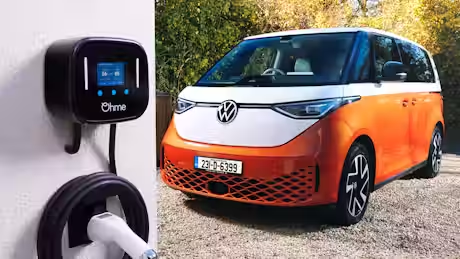
Looking to get a home wallbox EV charger installed? Our guide has you covered
Plugging in at home is usually the most convenient, safest and cost-effective way of charging an electric car or plug-in hybrid. You might find that the ability to charge faster using cheaper overnight energy tariffs will result in savings which will offset the cost of having a point installed after just a few years, compared to a three-pin plug.
There are plenty of companies offering home chargers for current or prospective EV owners, so it’s worth researching home wall boxes before you buy to find out how long you will have to wait for it to be installed, if a site inspection will be necessary and to assess how and where to fit it.
Some homes with older electrics may require upgrading before a wall box can be fitted, and you’ll need to think about connecting to the internet too, so you can make use of the apps which are needed to control and monitor the points.
A home wall box will normally deliver electricity at a rate of around 7 kiloWatts (kW), far faster than the 2.3 kW you can get from a three-pin plug. These domestic sockets should only really be used for emergency charges anyway, due to the continuous electrical load they put on the sockets. This could mean they overheat and trip a fuse, leaving you with less charge than you expected or putting a strain on your wiring which might be a safety issue. Most EVs and hybrids will not include these three-pin charge cables as standard either.
Some EV chargers are available with a maximum charging rate of 22kW but these require a three-phase electrical supply more often found at commercial properties such as factories and office blocks – most domestic electricity supplies are one phase.
Our in-depth guide on electric car charging has more information, while this guide will detail the 10 best home EV chargers, picked for style, price and functionality.
The 10 best home EV chargers to buy in 2025
(in alphabetical order)
- Andersen A3
- Easee One
- EO Mini Pro 3
- Hypervolt Home 3 Pro
- Indra Smart LUX
- Myenergi Zappi
- Ohme Home Pro
- Pod Point Solo 3S
- Rolec WallPod
- Wallbox Pulsar Max

1. Andersen A3

Price from: £995 (+installation from £395)
Best for: Choice of colours and built-in cable storage
Connection type:Tethered
Max charging speed: 7kW (single phase)
Solar integration: Yes
Smart tariff compatible: Yes (OVO only)
Dimensions: 494 x 348 x 148mm
If you are fussy about how your chargers look, then Anderson’s range should keep the most house-proud driver happy. The company offers 247 different colour options and even facias made of wood and carbon-fibre, so the unit can be matched to your house or car.
The new Andersen A3 is the company’s new ‘entry level’ charger which is usefully cheaper than the older A2, but it maintains the same clever features, such as a concealed reel to stow the cable and plug away from view when not in use. A brush seal also means the wire is cleaned every time it’s wound around the unit.
The only obvious sign of life from the A3 is an LED light on the front panel which shows you when the charger is active; all the other functions are controlled by Anderson’s app, which can instantly show you the cost of every charge and lock or unlock your charger remotely. As you’d expect, it also allows you to schedule your charging in line with your most economical tariff or solar and wind power sources, but Anderson chargers are not yet compatible with smart tariffs. We’ve been promised the A3 will be linked to OVO’s cheapest Anytime software ‘very soon’ however.
The A3 is also limited to 7kW model feeds and a 5.5m tethered cable. If you need a 22kW or 6.5m cable you’ll need to upgrade to the A2.
More details: www.andersen-ev.com.
2. Easee One
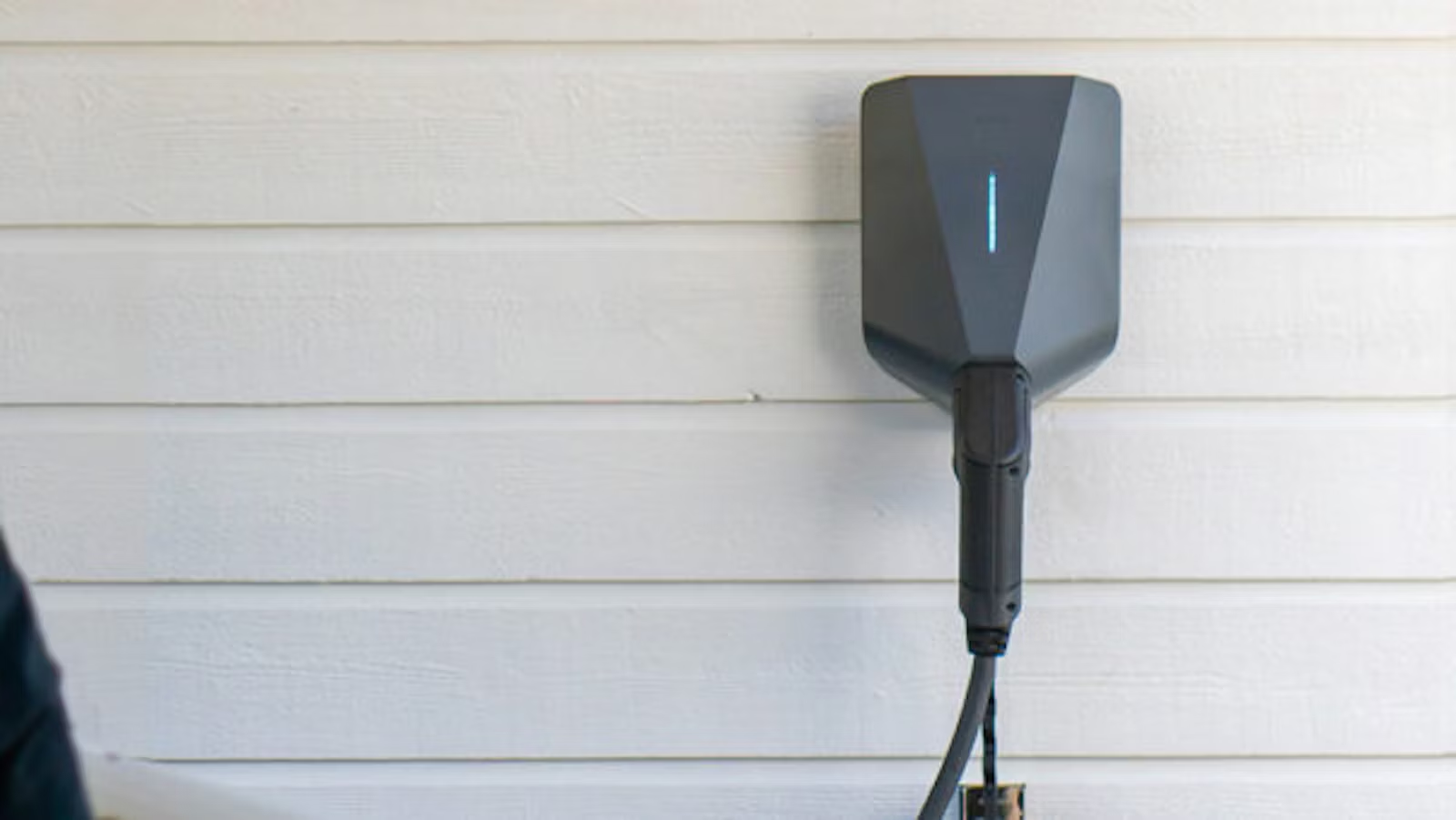
Price from: £735 plus installation
Best for: Compact size, discreet style
Connection type: Untethered
Charging speed: 7.4kW-22kW
Solar Integration: Yes
Smart tariff compatible: No
Dimensions: 253 x 193 x 106mm
The Easee One was developed in Norway specifically for the UK market and has a sort of discreet Nordic style which won’t make it an eyesore on the front of your house. It’s small, and there’s a choice of five facia colours (white, red, dark blue, anthracite and black) which can match your décor. You can even replace them if you fancy a change.
There’s no screen, so a subtle LED indicator tells you the status of the charger. All the other controls are via the Easee App. However, this is controlled by a 4G internet connection (with a lifetime subscription) which will be fine if you live in an area with good mobile phone coverage but could cause slow (or no) connections in rural locations or inside a building.
The only option is to have the One as an untethered unit with no cable attached. A hook to reel your own cable up is an optional extra and the plug can be locked into place to prevent theft.
Solar integration as standard, but the Easee is not yet compatible with smart tariffs. However, you can install three Easee units on a single fuse, allowing you charge a trio of cars from one location at the same time, with the power split between them evenly and access controlled by RFID cards. Software updates are automatically carried out over-the-air, when required.
More details: www.easee.com
3. EO Mini Pro 3
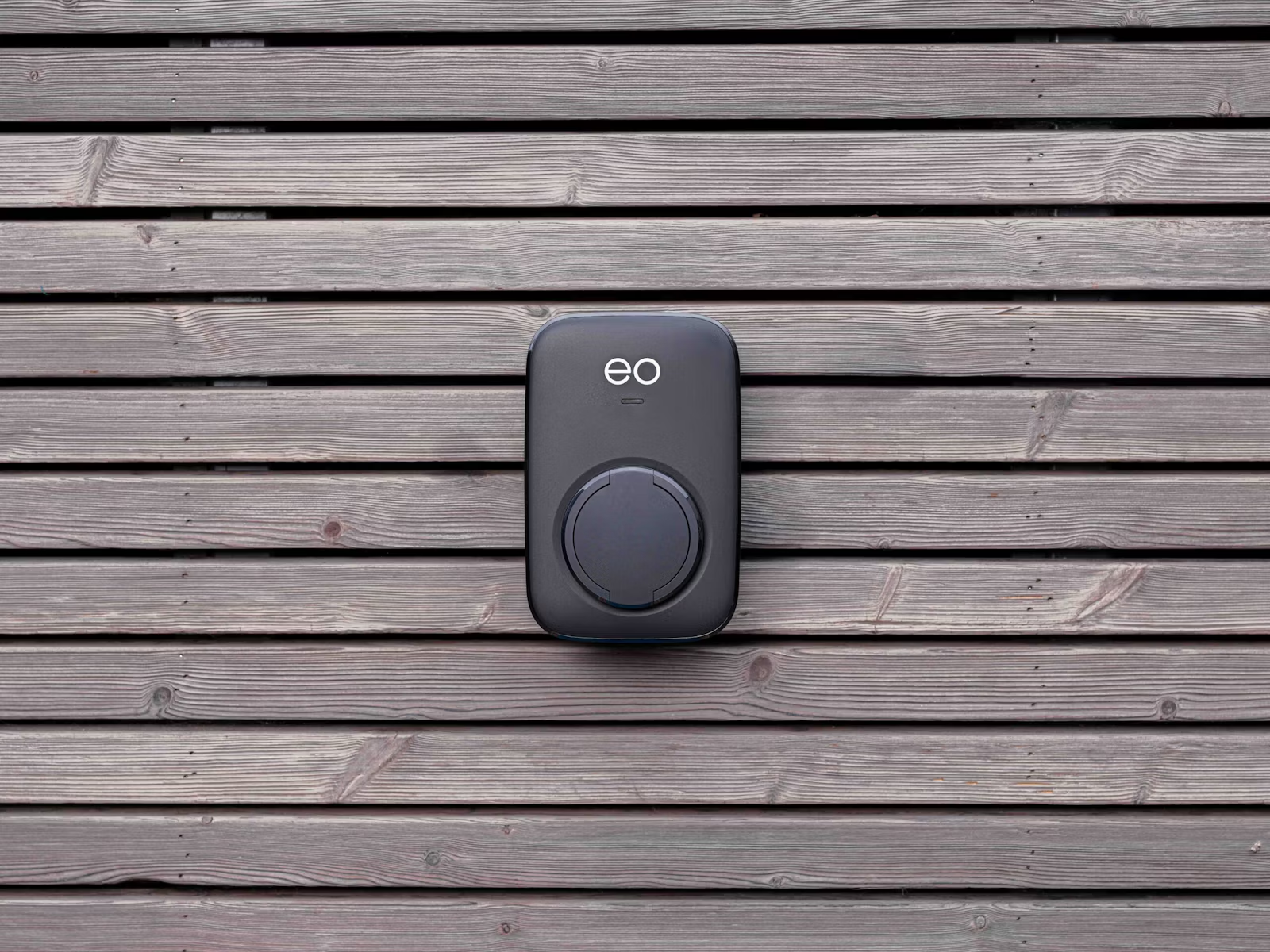
Price from: £599 plus installation
Best for: Being small and good value
Connection type: Tethered or untethered
Charging speed: 7.2kW or 22kW
Solar integration: Yes
Smart tariff compatible: Yes (British Gas/Hive only)
Dimensions: 230mm x 151mm x 125mm
You might see the EO Mini Pro 3 wearing its own branding or offered to you by British Gas as part of its Hive sub-brand, which offers integration to the ‘Smart Home’ app. You can also use it to access British Gas’ smart tariffs, which offer some of the cheapest overnight electricity. Make sure you do some sums though, as the Hive branded units seem to be pricier to buy.
Whichever version you choose, the Mini Pro 3 is a compact charger that can be untethered or tethered (with a charging lead hardwired in) – although the 5m long cable costs a hefty £100 extra.
The EO is ideal if you’re short on space, or just prefer a smaller charge point on your property. A tiny LED is the only indicator on the unit, and the case has a clever tapered design which allows you to store the reeled cable around it.
If you are not using Hive, then EO’s own Smart Home app offers scheduling and remote control functions. You can also tell it to prioritise power from solar panels.
More details: www.eocharging.com/home-charging
4. Hypervolt Home 3 Pro

Price from: £690 plus installation
Best for: Customer service
Connection type: Tethered
Charging speed: 7kW
Solar integration: Yes
Smart tariff compatible: Yes
Dimensions: 328 x 243 x 101mm
The Hypervolt Home 3 PRO’s bold looks might not be the best for anyone who doesn’t like to shout about their electric car ownership.
The larger-than-average charger is available in three colours (white, grey or black) but all have a large, illuminated lightning bolt on the facia which glows in various colours to indicate the charging status.
If you like the idea of that, then the Hypervolt has a lot going for it.
It’s designed and built in the UK and is already compatible with OVO’s smart tariff. The company has promised that Octopus Intelligent integration is coming very soon too, which will mean the cheapest overnight energy prices will be available.
It also has three charging modes – Boost, Eco (solar and grid) and super eco (solar only), plus the option of a super-long 10m charging lead if your parking spot is far away from your power supply.
There’s even the option of a post mount if you are short of a wall, which might make it perfect for commercial buildings and car parks.
Like most EV chargers, it’s controlled via an app and can be connected via Wi-FI or ethernet cable, but there’s no 4G option – so you’ll need to be near a router. Unusually, it can also be controlled via an Amazon Alexa unit.
More details: www.hypervolt.co.uk
5. Indra Smart LUX
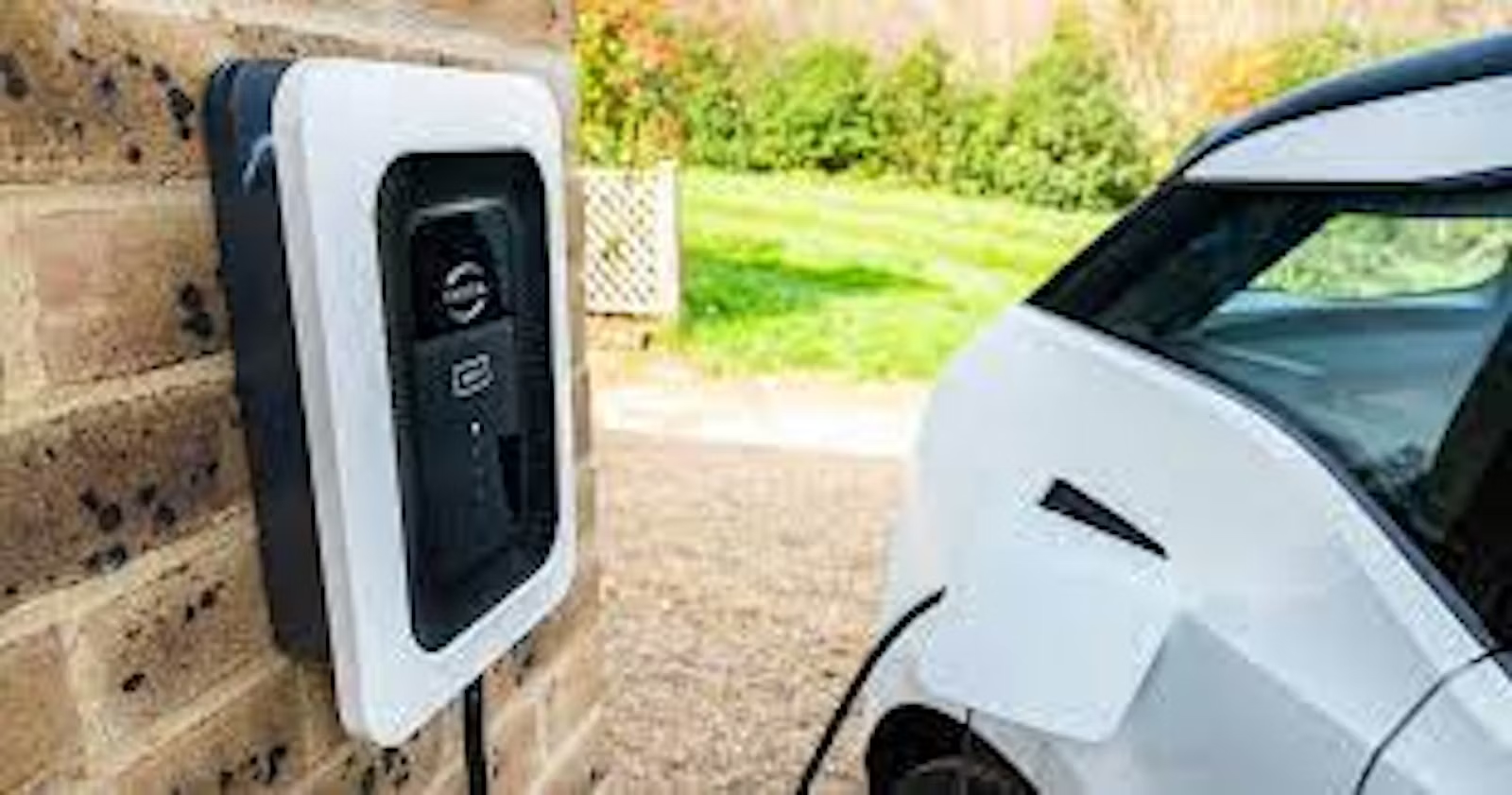
Price from: £699 plus installation
Best for: Narrow parking spaces
Connection type: Tethered
Max charging speed: 7.4kW
Solar integration: Yes
Smart tariff compatible: Yes (OVO only)
Dimensions: 201 x 306 x 78mm
One of the Indra’s main selling points is its super-slim profile. At less than 80mm deep it could be a top choice for anyone who wants the charger mounted in a tight space such as a narrow driveway or garage wall.
Despite this, there is still space to wrap up the unusually long 6m or 10m tethered cables – there’s no untethered option. There is also a choice of four colours for the facia surround so it can be made to look a little more interesting: Indra White; Symphony Black; Malvern Stone and Elgar Grey.
The front panel illuminates in a range of colours to show you the charge status, and a handy ‘Boost’ button on the facia means you don’t need to access the app in order to get a quick charge. It can connect to the internet using an ethernet cable, Wi-Fi, or a 4G mobile network so you get a choice of where to place the unit without having to worry about connections.
The Smart can also optimise energy flow to use the power of the sun to charge if you have solar panels at home and is also compatible with OVO’s Charge Anytime smart tariff for the cheapest off-peak rates.
More details: www.indra.co.uk

6. Myenergi Zappi
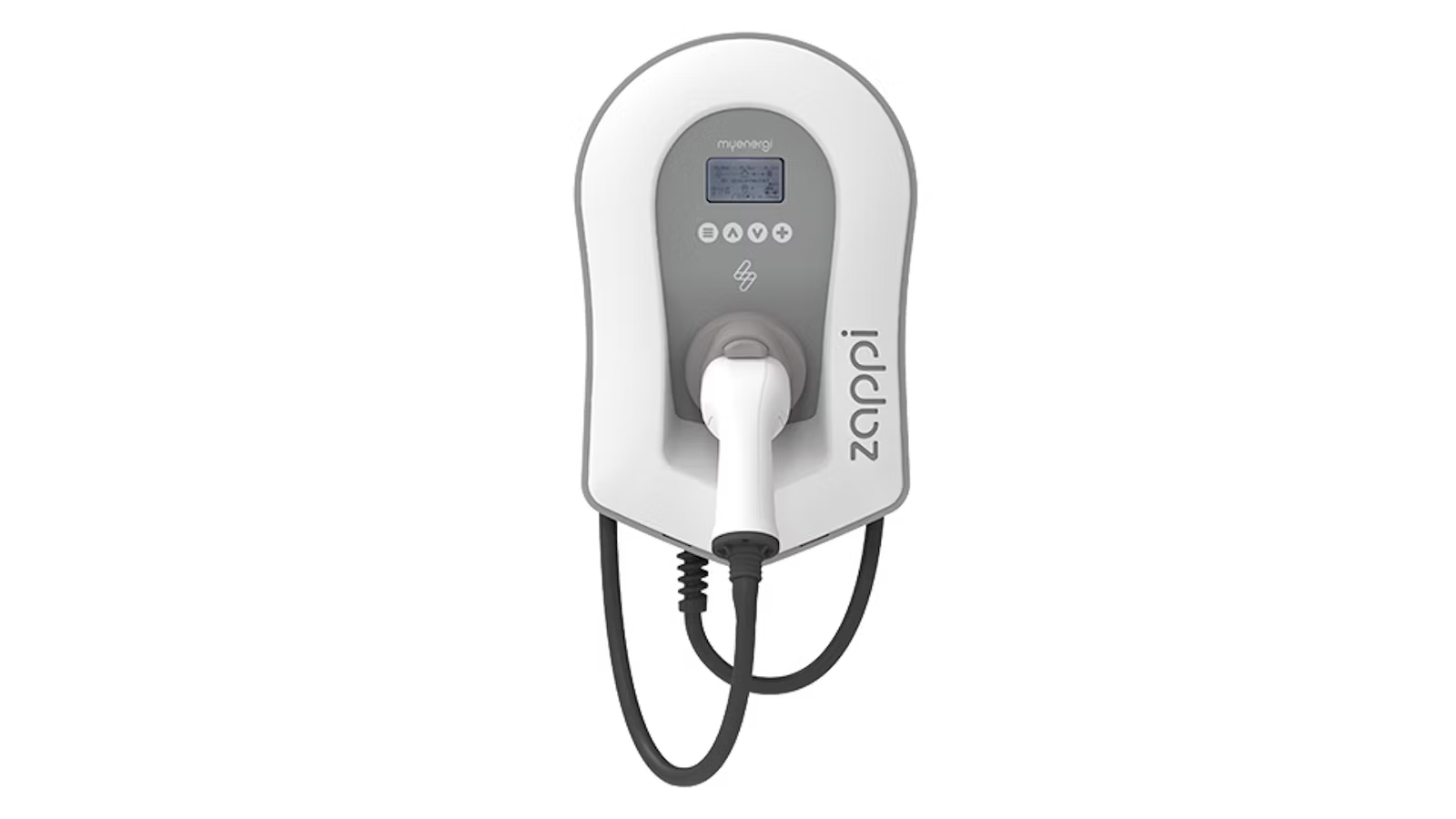
Price from: £779 plus installation
Great for: Integration with renewable energy sources
Connection type: Tethered or untethered
Max charging speed: 7.4kW or 22kW
Solar integration: Yes
Smart tariff compatible: Yes (Octopus only)
Dimensions: 439 x 282 x 122mm
The Myenergi Zappi home charger unit is one of a dwindling number which have a display on the unit itself, rather than relying on users doing everything via a smartphone app. The monochrome LCD screen is small though and is limited in the information offered, so users may find themselves reverting to the app instead.
The Zappi has plenty of features to control too. It has the technology to integrate with your home’s ‘ecosystem’ of solar, wind and battery storage power (also available from Myenergi), if you already have now or plan to upgrade in the future.
As part of this it has a special ‘Eco’ mode that can run using just the power from solar panels or wind turbines. Crucially it is also compatible with Octopus’ Intelligent tariff for cheapest charging prices.
The grey unit itself is available with a white or black surround, with 7 or 22kWh supply and tethered or untethered. The fixed cable is unusually long at 6.5m, and it wraps around the unit to keep it neat.
More details: www.myenergi.com
7. Ohme Home Pro
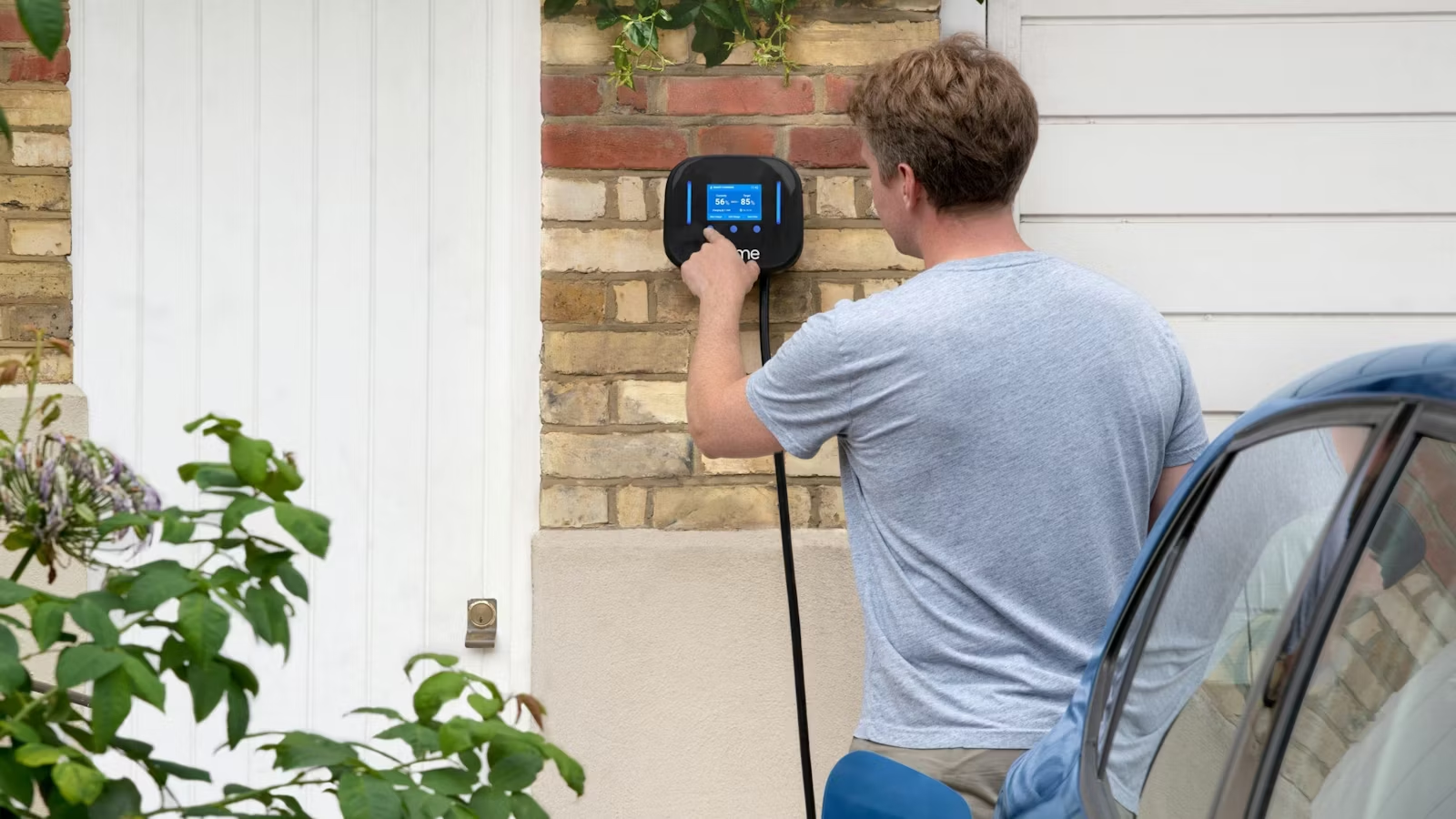
Price from: £546 or £999 installed
Best for: Doing everything in a neat package
Connection type: Tethered
Max charging speed: 7.4kW
Solar integration: Yes
Smart tariff compatible: Yes
Dimensions 170 x 200 x 100mm
There’s a choice of two Ohme chargers – the ePod which is a small, untethered unit with a basic LED status light and three control buttons, or the more sophisticated HomePro which has an LCD status screen. Since the Home Pro cost only £50 more and has a 5m Type 2 tethered charging cable as standard (8m is optional), it will make more sense for many buyers.
The Home Pro’s built-in LCD screen shows information on your car’s battery level and current charging rate, but this can also be monitored and controlled via Ohme’s smartphone app.
The Home Pro also integrates smart ‘dynamic charging technology’ and energy tariff integration, meaning it can automatically adjust when electricity is fed into your car, taking advantage of smart energy tariffs that vary their rates based on network demand. It’s one of the only chargers which can integrate with both Octopus and OVO’s smart tariffs.
The latest Ohme points are also now solar compatible, so you can feed the energy from your panels straight into the car’s battery. The only real drawbacks are the lack of a 22kW option and the Home Pro’s reliance on 4G data networks for connection, which could cause issues if you are in an area with poor reception.
More details: www.ohme-ev.com
8. Pod Point Solo 3S
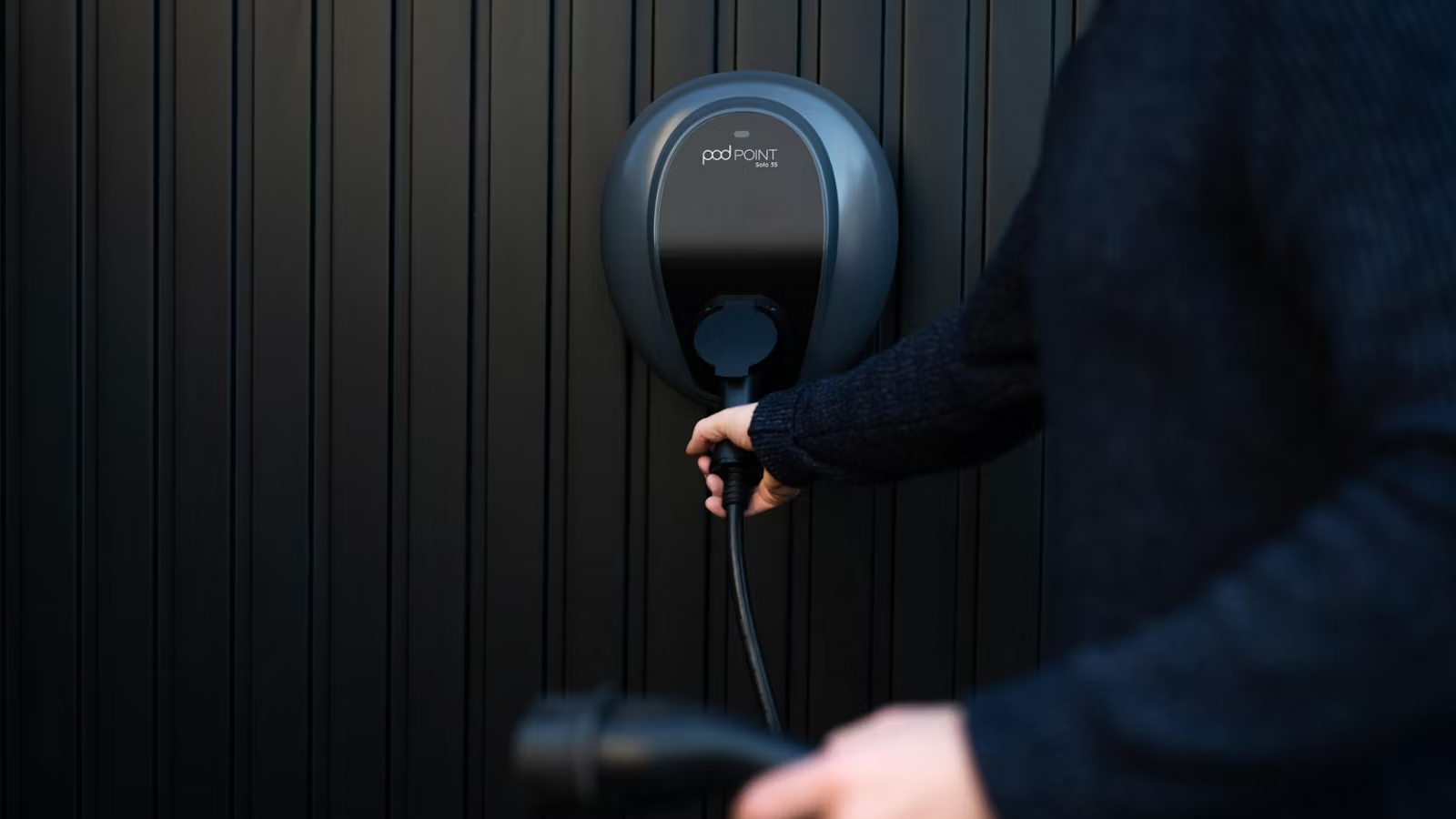
Price from: £849 installed
Great for: Keeping your phone appy
Connection type: Tethered or untethered
Max charging speed 3.6 or 7.0kW
Solar integration: Yes
Smart tariff compatible: No
Dimensions 330 x 290 x 167 mm (tethered)
Unusually, Pod Point is still offering the Solo 3 with a choice of two power ratings which include a 3.6kW option – that’s only a little faster than a three-pin plug. It is cheaper however, at £849 installed compared to £1,099 for the 7kW version. Both are available tethered – with a 5m cable – or untethered, for a £50 saving. The Solo 3S has an unusually long five-year warranty too.
The untethered (or universal, as Pod Point calls it) version accepts Type 1 and 2 connectors, so can charge any EV.
There’s no screen on the unit and just a small LED to show the charging status. All the functions and settings are controlled via PodPoint’s app, which can also be used to find and pay for public chargers on Pod Point’s network, including the massive number at Tesco stores nationwide. Besides meaning you have fewer apps cluttering up your phone, it also allows you to keep all your charging information in one place – useful if you want to keep an eye on costs and your EV’s efficiency.
The Solo also gets over-the-air updates via a wi-fi link, but you’ll need to mount it somewhere near a router to get the functionality.
More details: www.pod-point.com
9. Rolec QUBEV Smart
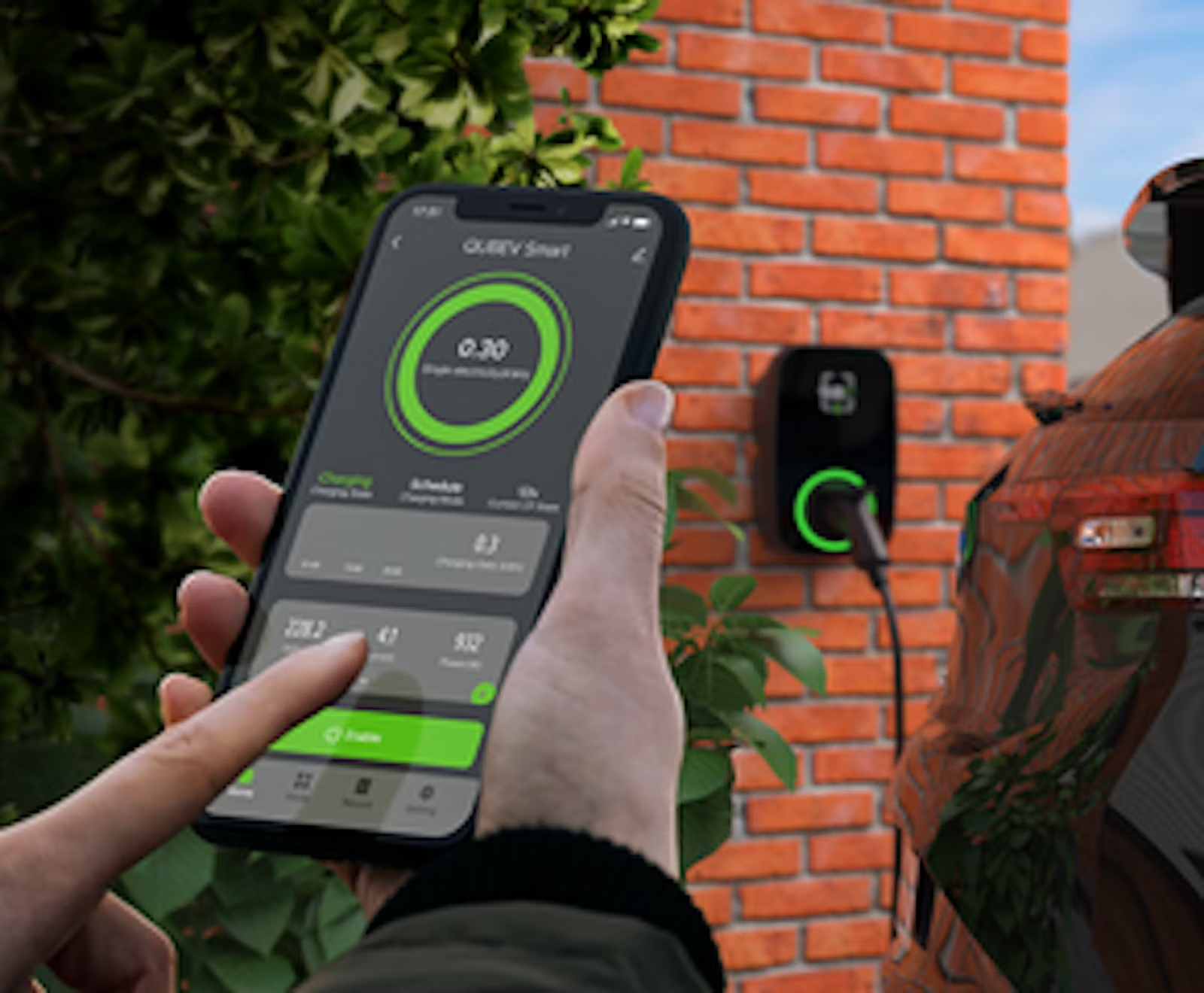
Price from: £389 (£785installed)
Best for: Value
Connection type: Tethered
Max charging speed: 7.4kW or 22kW
Solar integration: Yes
Smart tariff compatible: No
Dimensions: 330 x 200 x 132mm
The QUBEV Smart is the most affordable home EV charger in this list, but it isn’t short on features. The Rolec has plenty of functionality to offer, including the ability to choose solar power, if available, to make your charging as green as possible.
There’s an LED charging status indicator and the tethered version (which costs an extra £50) with a 5m lead and a Type 2 connector.
The compromise for the cost might be in the looks, as the Rolec is on the chunky side and doesn’t offer much in the way of style, but it has an LED indicator ring on the facia which shows the charge status. All the controls are done via the QUBEV Smart app, which gives full control of your charging for you and multiple users. This lets you schedule and start charging, but the Rolec isn’t compatible with OVO or Octopus’ smart tariffs. It will let you use solar power though.
More details: www.rolecserv.com/ev-charging
10. Wallbox Pulsar Max

Price from: £636 plus installation
Best for: Linking chargers
Connection type: Tethered only
Max charging speed: 7.4kW
Solar integration: Yes
Smart tariff compatible: Yes (Octopus only)
Dimensions: 166 x 163 x 82mm
The Wallbox Pulsar Max is another small and unobtrusive home charging unit which does without a display screen but is instead controlled via an app with plenty of functionality, including a facility to lock the charger to prevent your neighbours nicking your electricity. It can also be voice controlled using an Amazon Alexa or Google Assistant gadget, and will show you information such as expenditure and power use.
The app will also allow you to charge using solar power, or make the most of the Intelligent tariff from Octopus – although it’s not yet compatible with OVO’s equivalent. If you are a multi-EV family or commercial operation you can also link up to four chargers at once and distribute power across the connected units.
The Wallbox itself is about the size of an A5 sheet of paper with a glowing LED ring to show the charge status. The cable has to be stored on a separate hook however, which might not look the neatest.
More details: www.wallbox.com
How to pick the best home EV charger
There are a few considerations if you’re after a home EV chargers, including:
- Price: this will be a key metric for many. With most charge points fundamentally doing the same job with similar functionality, you’ll need to balance out how you feel about paying for style or compact size, versus how you feel the wallbox blends in with its location.
- Tethered or untethered: if you have more than one EV to charge and they have different connector types, you’ll almost certainly want an untethered wallbox. Otherwise, with pretty much all new EVs accepting Type 2 charging, you should be fine with the neater, slightly more convenient nature of a tethered unit.
- Three-phase capability: a three-phase supply will get you charging speeds of up to 22kW, but getting three-phase installed can be very expensive, and most people don’t do it. Paying extra for a charger that can handle three-phase won’t make sense if you count yourself among these people.
- To screen or not to screen: having an easy-to-read display on the charger can be convenient, but with almost all of them operating via a smartphone app, it’s worth asking yourself if you want a screen or not.
- Cost of installation: some home chargepoint installations cost more than others, so be sure to factor this into your decisions and know the price including installation.
Buy your new electric car with carwow
If you’re looking to make the switch to an electric car, check out the latest EV deals available through carwow.
There’s no haggling needed from your end — dealers will compete to offer you the best price, and you can do it all from the comfort of your sofa.
If you’re still looking for more information about owning an EV, check out carwow electric – our one-stop hub for going electric.















